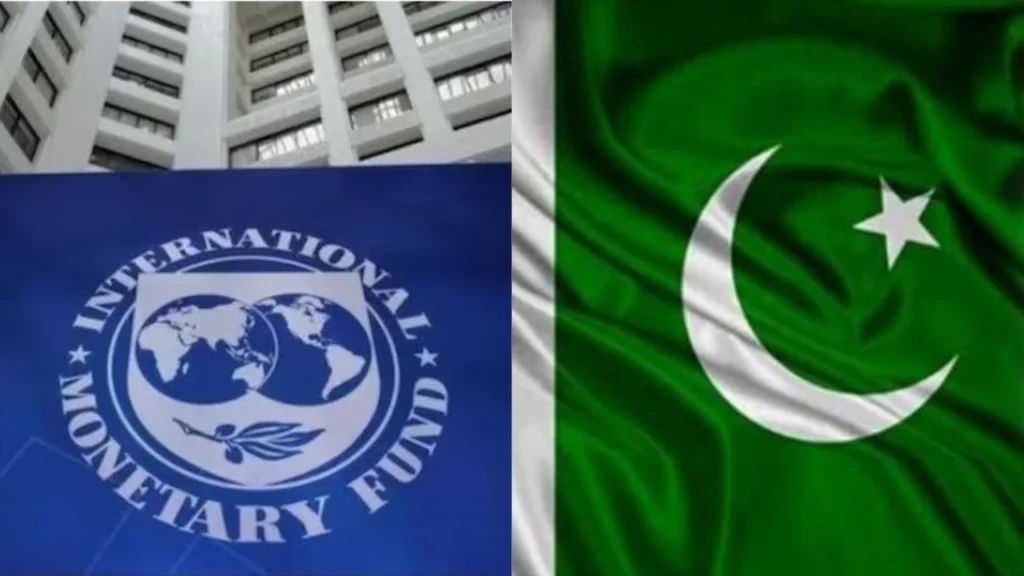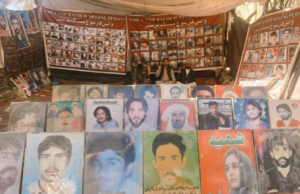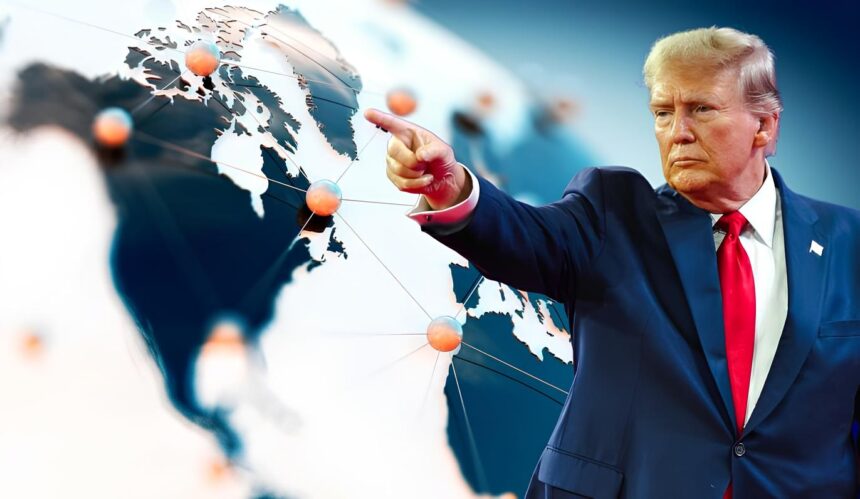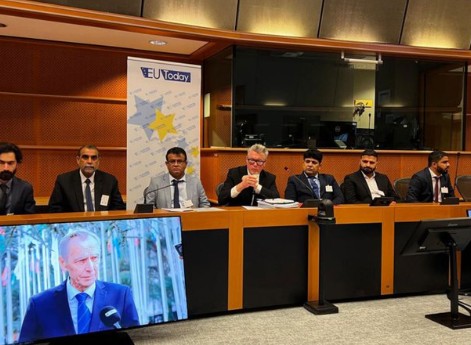
Pakistan’s ongoing struggle to stabilize its economy has prompted a strategic pivot toward alternative financial alliances, with a notable shift toward the BRICS bloc and its financial arm, the New Development Bank (NDB). This reorientation is rooted in frustration with the conditions imposed by traditional lenders like the International Monetary Fund (IMF) and the World Bank, whose aid often comes bundled with structural reforms, austerity measures, and privatization programs that have yielded mixed outcomes for Pakistan’s development trajectory. While this pivot promises diversification and increased autonomy, the country’s track record raises serious questions about whether new loans, regardless of origin, will be any more effective than the old ones.
Pakistan has long relied on short-term fixes through external borrowing to bridge its fiscal gaps, and the results have been predictably cyclical. Successive governments have secured emergency packages from institutions like the IMF, only to return for additional assistance years or months later. The most recent infusion of support came in the form of a $3.4 billion loan rollover from China, $1 billion from Middle Eastern banks, and $500 million from multilateral lenders. Together, these inflows helped Pakistan reach its critical $14 billion foreign reserve target set by the IMF, staving off default and meeting immediate financial obligations. In addition, the Asian Development Bank (ADB) stepped in with an $800 million package designed to improve fiscal sustainability and public financial management, coupled with a $350 million loan under the Women Inclusive Finance (WIF) Programme. Yet despite these substantial interventions, structural deficiencies persist, and public services continue to deteriorate.
It’s against this backdrop that Pakistan has chosen to invest $582 million over seven years to acquire a 1.1% stake in the NDB. Founded by the original BRICS nations, Brazil, Russia, India, China, and South Africa, the NDB was created to fund infrastructure and sustainable development projects across the Global South. Unlike its Western counterparts, the NDB and the BRICS Contingent Reserve Arrangement (CRA) offers loans without stringent conditionalities and allows borrowing in local currencies, features that are particularly attractive to countries grappling with volatile reserves and limited fiscal space. Pakistan’s BRICS membership application in August 2023, was part of a broader campaign to realign its financial partnerships.
This pivot toward BRICS is not without precedent. Pakistan’s previous IMF bailout of $7 billion was made possible with co-financing from BRICS-affiliated states, Saudi Arabia, China, and the UAE. The BRICS bloc, meanwhile, has positioned itself as a credible alternative to Western institutions by deepening its ties across the Global South through trade, diplomacy, and infrastructure development. For Pakistan, joining this bloc could open up avenues for more flexible borrowing and greater geopolitical clout. But optimism must be tempered by realism: membership and access to BRICS funding will not automatically solve Pakistan’s systemic challenges.
The problem lies in loan utilization. According to data from the ADB, Pakistan has received over $37 billion through 723 public sector loans, grants, and technical assistance programs. Of that, $28.27 billion has already been disbursed. The funding spans sectors from energy and climate resilience to transport and gender inclusion. Pakistan ranks among the top recipients of ADB assistance in South Asia, eclipsing neighbors like Bangladesh and Sri Lanka in total commitments. Yet despite this financial muscle, the country’s development indicators remain dismal. Public debt has ballooned to over $131 billion, while Pakistan’s investment-to-GDP ratio hovers around 15 percent, half the regional average. This lack of investment translates into poor infrastructure, limited access to electricity and clean water, and inadequate health and education services.
In this context, Pakistan’s courtship of the NDB and its BRICS partners represents both a financial strategy and a geopolitical maneuver. Yet the real challenge is not where the money comes from, but how it’s spent. Unless Pakistan develops the institutional capacity, political will, and transparent mechanisms needed to ensure meaningful reform, even loans from the most lenient of lenders will fail to produce lasting change.
Pakistan’s chronically fragile financial landscape has plunged the country into a profound debt trap, where mounting liabilities continuously erode its capacity to invest in meaningful development. A significant portion of Pakistan’s tax revenue is consumed by debt servicing alone, leaving little room for expenditures that could foster socioeconomic progress or strengthen the foundation for the protection of citizens’ rights. This vicious cycle of borrowing to pay off existing debts has become a defining feature of Pakistan’s fiscal trajectory, stifling its ability to deliver core public services such as healthcare, education, clean water, and social security.
The vast sums acquired through external loans, whether from the IMF, the Asian Development Bank, or bilateral donors, have rarely translated into tangible improvements in the everyday lives of Pakistan’s citizens. Despite over two dozen loan arrangements with the IMF and decades of financial inflows, the country continues to struggle with economic instability, poor infrastructure, rising poverty, and systemic inequities. Public investments remain woefully insufficient, with Pakistan’s investment-to-GDP ratio lingering around 15 percent, among the lowest globally and far below South Asia’s average of 30 percent. This shortfall has left millions without access to reliable electricity, functioning schools, or adequate hospitals.
Furthermore the contrast between Pakistan’s rising defence expenditure and its deteriorating human development indicators paints a troubling picture of misaligned fiscal priorities. In its 2025–26 federal budget, Pakistan increased defence spending by 20%, allocating around $9 billion to the military, making it the second-largest budget item after debt servicing, which consumes $29 billion. Together, these two categories account for nearly 62% of total government spending, leaving little room for investment in health, education, or poverty alleviation.
Programs aimed at restructuring the tax system, reforming energy distribution, and privatizing state enterprises often falter due to weak institutional capacity, political pushback, or poor execution. As a consequence, large segments of the population continue to endure precarious working conditions, inadequate social protection, and violations of basic rights enshrined in national and international legal frameworks.
Pakistan’s external debt utilization, in essence, has failed to catalyze the kind of transformative change envisioned in policy documents or donor strategies. It has instead reinforced a model of fiscal dependence that prioritizes repayment schedules over human development. In this climate, the state has increasingly retreated from its responsibilities in key areas, allowing private actors to fill the void in education, healthcare, and welfare provision, often at the expense of equity and accessibility.
Ultimately, Pakistan’s pivot toward the BRICS Bank reflects a sobering reality: the era of relatively accessible Western loans has run its course. After receiving over two dozen loan programs from the IMF, making it one of the institution’s most frequent borrowers, Pakistan remains plagued by underdevelopment, macroeconomic volatility, and persistent social inequality.
Despite decades of international financial assistance, the outcomes have failed to deliver meaningful progress. Neither sustained economic growth nor robust human development has emerged from these loan cycles. Instead, debt burdens have deepened, and vital reforms have stalled. And an unbridled rise in Pakistan’s defence spending suggests that these funds are being diverted toward strategic and military ambitions rather than the socioeconomic development
Regrettably, it remains doubtful that Pakistan’s pivot toward BRICS will be accompanied by the kind of discipline, strategic foresight, and institutional accountability needed to translate ambition into genuine progress. Without a radical shift in governance and implementation, this pursuit risks mirroring past patterns: a fresh round of external loans deployed as short-term lifelines rather than long-term solutions. The country’s history of underutilized aid, stalled reforms, and mounting debt suggests that, absent transformative change, new loans may not mark a new beginning, but simply extend a familiar narrative of fleeting opportunity and enduring neglect.
For now engaging with Pakistan could pose a significant risk to the financial stability of the New Development Bank, potentially undermining the strength and credibility of more fiscally disciplined member states.






